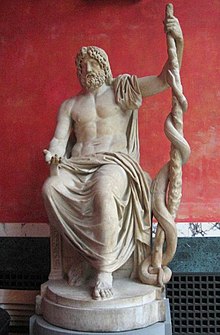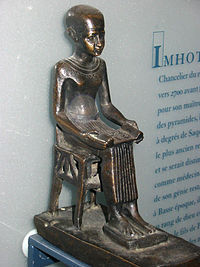1. Our problems awaiting solution
Around labour value theory, there are many problems and they have been debated for a long time. We can arrange them as follows.=81@=81iFig.1=81j
On the assumption that structure of production is showed in Fig. 1, we can describe our problems as follows.=81@(Fig.2)
First, there is a basic problem that (1), that is, relations of value can exist or not. Adding that, how can be proved this relation? Second, there is a big problem, what is called 'transformation problem'. How do we think about this? Third, the main problem for us, is the relation between (1) and (2). In other words, what does it mean 'Value controls production price', and how does it be accomplished?
If we want to remain as Marxian economists, we have to make answers to these three questions.
2. How can we demonstrate labour value theory?
When Marx wrote "Das Kapital"(1sted=81D1867, 2nd ed.=81D1873), the popular value theory was, of course, labour value theory. What he did was how labour value theory had to be in the preposition that labour theory is true. But our situation is in very different circumstances. Nowadays we have to demonstrate that labour value theory is true. Many disputants express their opinions about how to demonstrate the truth of this theory. Some people say that it is necessary to change the definition of value from Marx's so as to help from falling in false. Others say that Marx's value theory is wrong or useless. My assertion is as follows.
(1) Labour value theory in chapter 1 of 'Das Kapital' is a hypothesis as the start point of any other theories. This hypothesis can not be proved as truth within the theory itself. What Marx did was which conditions labour value theory has to fulfil to maintain consistency in itself and to be able to explain inner relationships of capitalist society.
(2) What I think as hypothesis is the preposition of same quality or homogeneity of labour. Real labour, of course, are different each other. But not only Marx but also every economists based on labour value theory, agreed that labour is homogeneous in some sense. As every commodity is estimated by money, and can be distinguished from each other only by quantity, we must find some homogeneity. I think only three answers can be, labour (as Marx, who analyzed commodity to value in use and value in exchange), money (like realists about money and advocates of abstract labour) and utility in general (like neo-classical theorists and Boehm-Bawerk).
(3) The reason why I choose labour and do not choose other two elements is to distinguish many sorts of prices as I will analyze afterwards. And my attitude that I assume labour is homogeneous in a sense means that labour value theory can not be proved in Chapter 1 of 'Das Kapital'.
(4) How can we prove that labour value theory is true, then? Labour value theory is, as is always regarded, necessary to prove (a) that value regulates price level and (2) that the origin of profit of capitalists is surplus value. The second point is easy to prove if labour value theory is true and the standard of wage is value of labour power. The main problem is to prove the first point. We will come back to this point later.
3. How to deal with 'transformation problem'?
Through the controversy on 'transformation problem', we got the conclusion that the two preposition that total value equals to total production price and total surplus value equals to total profit at the same time can not generally be maintained. But Marx might also agree this conclusion. The main point is not there. Value system can be calculated when coefficient of technique and coefficient of labour are decided. On the other hand, we can say, about production price, that relative production price is calculated when both the rates of real wage and profit are given adding above conditions (we can give money wage rate instead). In another expression, there is one value that we can decide freely within prices and profit rate (See Fig. 2).
This means there may be many production price levels corresponding with different profit rates. If different profit rate can appear (we will argue about the conditions of this point), we can get many different production price levels which do not even fulfil the condition that total value equals to total production price.
This comes from two different calculations are achieved. What sort of situation this is? It means production price as such is calculated to fulfil the equal level of profit rate, and not to fulfil total production price equal to total value. And at the same time, production price as such shows only necessary conditions to get equal profit rate, but does not show sufficient conditions to get equal profit rate.
To solve this latter question, we need four levels of analysis from value to market price. That is, (a) labour value, (b) production price, (c) market production price, (d) market price.
We can only observe daily changing market price. Of course demand and supply may be not equal. But we can suppose a balanced price, which means the equivalence of demand and supply. This price is nearly equal to the equivalent price in neo-classical theory. But this level of price can not be stable. Profit rate must be equal through every industry. The price, which fulfils this condition, can be named market production price. When market condition is under free competition, this price, market production price, will be attained in many different levels.
But there is one market production price, which fulfils the condition that total value equals to total market production price. I call this price as production price to distinguish it from other market production prices. I think this production price is the same as what Marx called production price, that is, true transformed price from value.
Thus we can distinguish three different equilibrium, that is, (1) equilibrium between supply and demand, which correspond with market price, (2) equilibrium which achieves equal profit level through industries, which means market production price, and (3) production price which realize value. But I do not say any words until now about the conditions that realize different market production prices and how these market production prices converge to production price. This point requires further examination.
4. The role of moneyed capital to be lent.
Market price and market production price realizes through competition among capitals. Demand and supply plays rolls in this matter. So we have to analyze this point.
*M1: money as means of circulation, including means for payment; M2: money as money, deposit to banks in practice; M3: advanced money from banks to borrowers.
[Explanation of Fig. 3]
At the left hand of Fig. 3, flow of goods is shown. Oblique arrows show the stream of goods from production to consumption, which is mediated by market, or circulation. Money as means of circulation remains in market. Supply and demand meet in the market, but the total amount of supply exceeds X (as for the existence of intermediate trade). At the right hand of this figure, there shows complex trade of loan. Through trade of goods, free money or unemployed capital springs from surplus value, depreciation fund and reserve fund for fluctuation, which can be lent by banks. Banking system can expand the sum of loan through its mechanism of credit creation. From the viewpoint of banks, it is serious if they lend money or capital. They think they lend money when money comes to banks through customers' deposit or clearance of payment. They think they lend capital when money is drawn out from banks. In this case their reserve fund fall off and banks have either to restrain from lending or to go the Central Bank to borrow additional money. This means the limit of credit creation.
From the viewpoint of borrowers, if borrowed money is capital or money is thought from different angles. When they can use borrowed money to expand their business, that is, to expand reproduction, they think they borrowed capital. When they use that money to clear old payment promise, they regard they borrowed just money, not capital. This difference influences the scale of reproduction by borrowing (See chapter 31 to 33 of 'Das Kapital', Book 3).
What we want to explain is how price level fluctuate from time to time according with variation of expected profit rate and interest rate.
But I must tell before we go into detail that we abridge three points. First, we consider only two markets; commodity market and money (capital) market, and omit labour market. So we suppose real wage rate is fixed (or money wage rate is fixed). It is unreasonable to ignore wage variation to analyze business fluctuation, I know, but it is only to simplify the analysis. Perhaps changes in wage rate will delay compared with changes in price, and through the upswing stage of business cycle, rising commodity prices can stand for relative change between wage and price and rising profit rate.
Second, we consider only banking system, that is indirect finance, and ignore security market. By this abridgement we are to ignore the important role of security market to decide interest rate, which J. M. Keynes analyzed through speculative motive to reserve money. Third, we do not think about technical innovation. This element is of course very important and gives much influence to the level of expected profit rate and the level of reproduction. But I think it is unnecessary to consider about it when we concentrate our attention to the relation between value and price.
5. The role of moneyed capital to be lent (continued)=81\=81\why we deny neo-classical theory
Warlas' law indicates that economic activity can arrive at general equilibrium under complete competition. This theme premises both diminishing marginal product and Say's law. We deny both of these premises. The first premise may be true in a short run, in another word during existing fixed capital does not change. When we think about profit equilibrium, we have to think of the long term during which fixed capital can change. Then we will get a more flat cost curve. But we do not say further about this point. What I want to put emphasis now is the mistake of Say's law. This law means that function of money is limited to a tool for circulation. Of course sometimes Marx himself premises Say's law.
For instance famous reproduction formula that Marx analyzed in book 2 of ' Das Kapital', money works only as a tool for circulation (when he exceptionally mentions about cash savings, he supposes cash savings are equal to real investment).
But as we already suggested, money works sometimes as currency, sometimes as money as money, and sometimes as moneyed capital.
Now we are going to analyze business cycle, we support the premise of effective demand, established by Keynes (but we do not agree with his premise of fixed price and adjustment by supply)=81D
5. Business cycle and change of prices, profit rate, interest rate
We can distinguish four stages of business cycle after Marx. They are (1) dullness after crisis, (2) moderate briskness, (3) apex, and (4) crisis or general overproduction. Adding this, we suppose the system is working under free competition and gold standard.
At stage (1), profit rate is low, so business activity is dull. Although moneyed capital for lends is plenty, as the result of dullness of business activity, seldom wants to borrow money because of low profit rate. Investment is almost for renewal. Economy is almost in the condition of simple reproduction. I think market production price in this stage is nearly equal to production price At stage (2), new investment begins, and business activity begins upward. In this stage moneyed capital is also plenty and interest rate is low, so many enterprises begin to expand their business. Demand leads economy. Price begins to rise, the level of profit rate going upward. But this stage is taken place of by stage (3). Business activity reaches its top, and a new state begins in the backward. Enterprises feel short, so they begin to borrow money as they can. This time money is not borrowed for expansion, but for maintain cash flow. From this reason, interest rate swings upward. Suddenly begins crisis. Many dishonored bills appear, bankruptcy, unemployment increases. It becomes open that too much value produced. Through such destruction of value, a new condition for reproduction is constructed. Then repeats stage (1).
This is how value controls the fluctuation of price. Through overproduction and destruction of too much produced value, economic equilibrium is attained. Although this state is economic equilibrium, social strain increases. In capitalist society, the last word of it is exploit and the social state of laborers getting worse compared with capitalists.
6. Conclusion
I assisted that labour value theory is a hypothesis at the beginning of economic analysis. If it is right, this theory can not be proved directly. How can it be assured that it is true? I think the best hypothesis may goodly explain and analyze the facts. My idea to explain the facts is separation of production price and market production price. Here production price has the character same to value. In the other hand, market production price is price that makes an economic equilibrium. But this equilibrium is conditioned by the stage of business cycle. Through one business cycle the system of value equilibrium occupies and regulates the system. And we also add that system works fairly good, under the condition in 19th century system. In our century, the state of affairs has changed because of monopoly, bigger roles of states, and the infest of speculation. But another essay has to be prepared for this theme.







